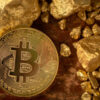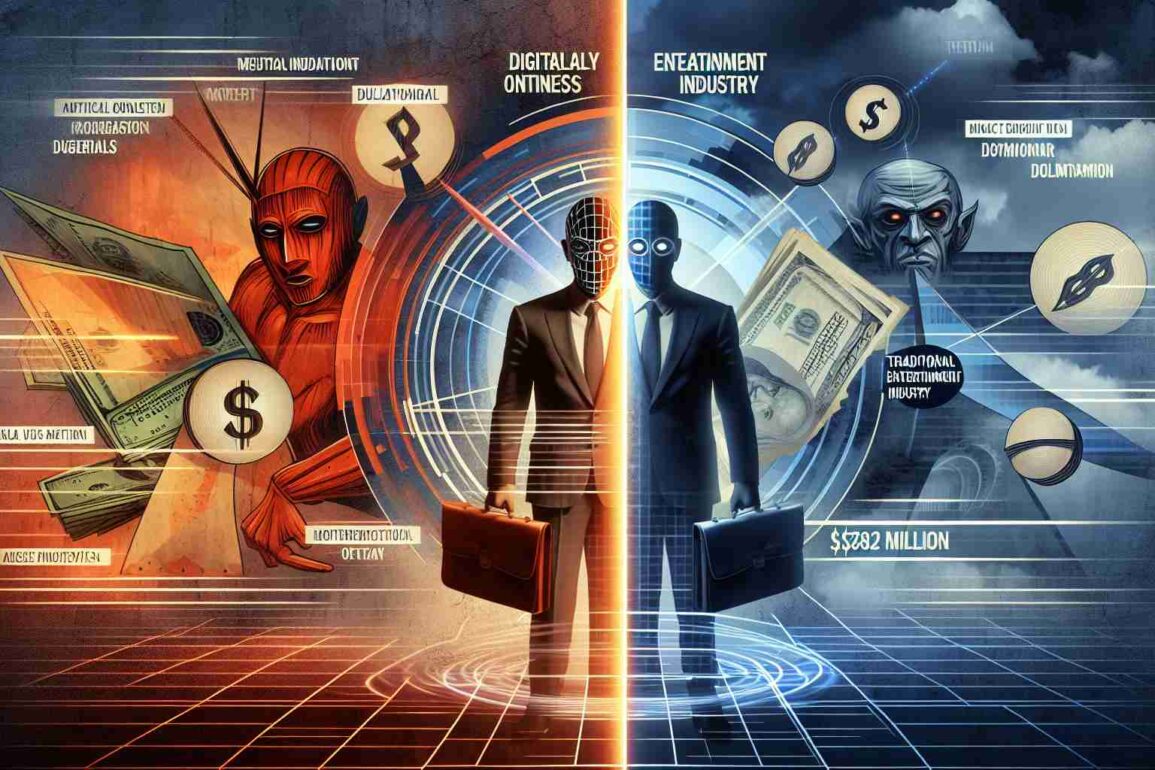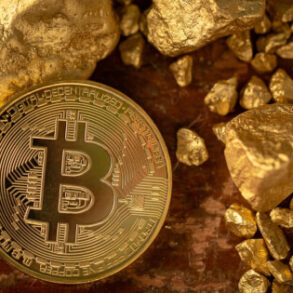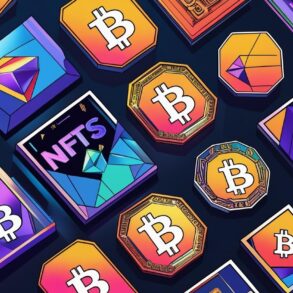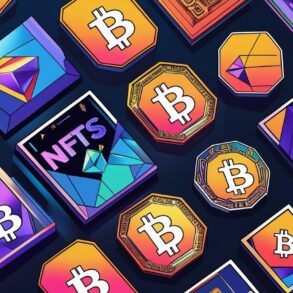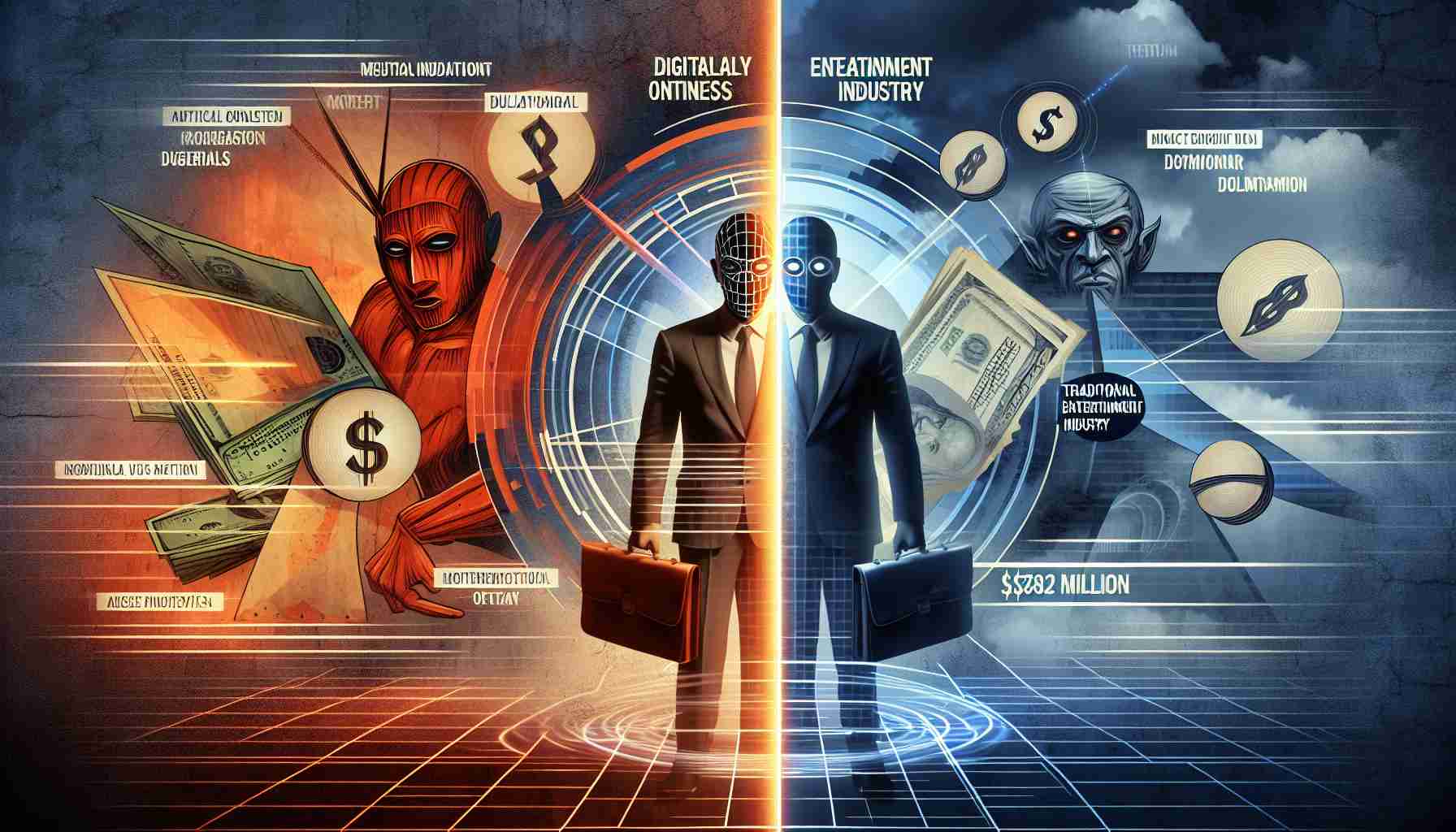
- A contested Alberto Giacometti sculpture worth $78.4 million is at the center of a legal battle involving crypto billionaire Justin Sun and entertainment mogul David Geffen.
- Sun alleges that former art adviser Sydney Xiong fraudulently sold the sculpture without his approval, forging his signature in the process.
- Geffen, who currently possesses the sculpture, contends the sale was legitimate and attributes accusations to “seller’s remorse.”
- Sun, a notable player in the art scene, seeks restitution while navigating the intersection of high-stakes art collection and cryptocurrency wealth.
- The case highlights the complexities of trust and ambition in the world of elite art dealings and digital currency influence.
Picture this: a courtroom drama with walls adorned by priceless art and pockets lined with digital fortunes. In the heart of this vortex are Justin Sun, a crypto billionaire with cutting-edge ambitions, and David Geffen, a storied entertainment mogul and cultural giant. Caught between them is a masterful sculpture by Alberto Giacometti, valued at a staggering $78.4 million.
Once a crown jewel in Sun’s burgeoning art collection, Le Nez is now the epicenter of an intense legal skirmish. Sun claims the piece was swindled from him by a former art adviser, Sydney Xiong, who allegedly forged his signature and sold the sculpture without his consent. Xiong, embroiled in accusations of deceit, has yet to publicly address the scandal. Her alleged actions have set the stage for a fierce confrontation with Geffen—who maintains his acquisition was above board.
In the echoing chambers of NYC’s elite auction houses, Sun is no stranger. He spent millions on Warhols, Picassos, and NFTs, planting his flag in the art world. Yet, this purchase would etch his name into a different kind of history. On the other side, Geffen, with his colossal yacht and eponymous museums, stands as a towering figure in global philanthropy and art collection. His camp argues this is merely a case of “seller’s remorse,” and Geffen’s claim to Le Nez is indisputable.
The dispute is a saga of trust shattered by towering ambition and cutthroat negotiations. It mirrors the volatile intersection of art and cryptocurrency—a space where masterpieces and megabytes collide. As Sun seeks justice and restitution, the art world holds its breath, watching as two titans battle for a piece of history. This unfolding drama underscores a timeless truth: in the nexus of art and wealth, complexities abound, and the stories are as priceless as the works themselves.
The Hidden Layers of Billionaire Art Battles: The Crypto King vs. The Cultural Giant
How-To Steps & Life Hacks: Protecting Your Art Collection
If you’re navigating the complex world of art acquisition like Justin Sun, here are some essential steps to safeguard your collection:
1. Verify Provenance: Before finalizing any purchase, consult multiple sources to authenticate the history and ownership of the artwork. Use reputable auction houses or art dealers recognized by international art associations.
2. Use Escrow Services: To prevent fraud, engage third-party escrow services to handle financial transactions securely.
3. Legal Counsel: Employ specialized legal counsel familiar with art law to review contracts and ensure compliance with local and international regulations.
4. Digitize Records: Keep digital copies of all transaction documents, certificates of authenticity, and communications related to your art acquisitions for easy access and protection against theft or forgery.
Real-World Use Cases of Digital Assets in Art
The intersection between cryptocurrency and the art world is transforming traditional systems:
– Tokenization of Art: By creating digital tokens representing fractional ownership of artworks, investors can buy and sell shares of high-value pieces, democratizing access to fine art.
– NFTs (Non-Fungible Tokens): A significant trend, NFTs allow artists to sell verified digital pieces directly within a globally connected blockchain, ensuring authenticity and providing artists with royalties.
For more insights on NFTs, visit Coinbase.
Market Forecasts & Industry Trends
The art market is poised for transformation driven by technology:
– Increasing Art Digitization: A growing trend involves the digitization of art collections, with an expected market size increase of over 9% CAGR from 2023 to 2028, according to Statista.
– Emerging Market Players: A rise in wealthy crypto investors is leading to new market entrants influencing art valuations and acquisitions.
Controversies & Limitations
While the integration of cryptocurrency in art is revolutionary, it presents challenges:
– Regulatory Hurdles: Lack of universal regulations governing cryptocurrency transactions complicates tax implications and valuation consistency.
– Security Risks: The digital nature of crypto assets can make them susceptible to hacking if not properly secured.
Legal Tutorial & Compatibility: What Collectors Should Know
Understanding art law is crucial in avoiding disputes like the Sun vs. Geffen case:
– Art Transaction Laws: Stay informed about the legal frameworks that protect art transactions in your jurisdiction. The sale of stolen art often involves intricate legal battles across international borders.
– Blockchain Benefits: Blockchain technology is being embraced for its transparency and immutability, providing an audit trail for artworks.
Pros & Cons Overview
Pros:
– Increased accessibility to art investment through digital platforms.
– Greater transparency and traceability in art transactions.
Cons:
– Potential for fraud and misrepresentation during digital transactions.
– Regulatory ambiguities complicate investment strategies.
Quick Tips for Art Collectors
– Stay Informed: Regularly update your knowledge about current art market trends and emerging technologies.
– Secure Expert Opinions: Network with art experts and other collectors to gain insights and form smart acquisition strategies.
To delve deeper into the future of art and technology, explore Artnews.
By applying these strategies, art collectors can navigate the tumultuous currents of the art and crypto worlds, safeguarding their investments while embracing innovation.
This post was originally published on this site be sure to check out more of their content


